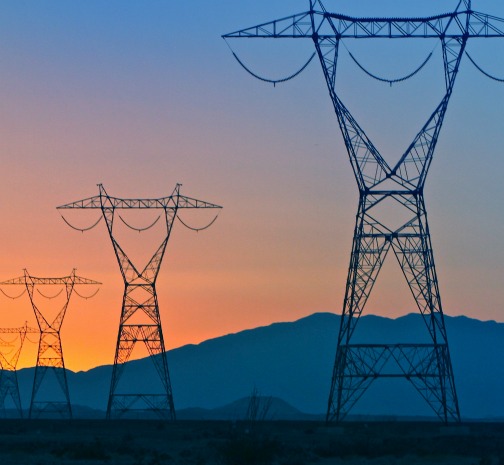 Evidence that utilities are increasingly turning to wind energy is well documented, and recent announcements show this trend accelerating. Last year, for the first time ever, wind power came in as the largest single source of new electric generating capacity in the U.S., installing 42% of all new capacity in 2012 and 36.5% of all new generating capacity over the past five years.
Evidence that utilities are increasingly turning to wind energy is well documented, and recent announcements show this trend accelerating. Last year, for the first time ever, wind power came in as the largest single source of new electric generating capacity in the U.S., installing 42% of all new capacity in 2012 and 36.5% of all new generating capacity over the past five years.
Utilities are increasingly recognizing the hedge value against fossil fuel price volatility and the zero fuel risk premium that wind energy brings to a generation portfolio.
By the end of 2012, the top five electric utilities with wind power capacity on their systems were Xcel Energy, MidAmerican Energy (including PacifiCorp), Southern California Edison, Pacific Gas & Electric and American Electric Power. Eight utilities currently purchase or own more than 1 GW of wind power each.
In total, more than 1,400 utilities purchase or own wind power directly or through wholesale electric power providers, including joint action agencies, generation and transmission cooperatives and other authorities. This means that over 43% of the 3,250 electricity providers in the U.S. have wind energy in their generation mix.
Helping to drive the drop in wind prices is the larger wind-swept area of the turbine blades and the taller wind towers, along with improving turbine production and a subsequent improvement in net capacity factors. Not only have such technology improvements meant more output at sites historically known for their top wind resources, they have also triggered a growth in the number of geographic areas in which wind farms are economically feasible. Areas previously not considered to be potential project sites are now under development, giving an ever-growing number of utilities a cost-effective wind energy option.
Further, a number of recent announcements continued to underscore the trends of utilities doing even more with wind power – in some cases, on an unprecedented scale:
- MidAmerican Energy announced plans to add up to 1,050 MW of wind generation, consisting of up to 656 new wind turbines, in Iowa by year-end 2015. The company indicated that this latest expansion of wind power will enhance economic development and provide in excess of $360 million in additional property tax revenues over the next 30 years.
- Xcel Energy, also in May, announced that it would sign new power purchase agreements in Colorado for an additional 550 MW of new wind projects resulting from an RFP issued earlier this year. Xcel Energy indicated that wind power is now competitively priced with other forms of generation, which will allow it to increase the amount of wind generation in its Colorado system by 25%.
- The Michigan Public Service Commission approved two power purchase agreements for wind projects in that state to supply wind energy to DTE Energy, the state's largest utility, allowing the utility to meet RPS requirements one year early. This led to a plan filed in early June that will allow DTE Energy to reduce a renewable energy surcharge for their residential customers from three dollars to 43 cents, based on the declining cost of wind power – driven by improved wind turbine technology and the extension of the production tax credit, noted DTE Energy in its filing.
As wind energy expands in the U.S., utilities are increasingly locking in long-term fixed prices and reaping the benefits for their stakeholders, their customers, and their bottom line.
What's next?
At the American Wind Energy Association (AWEA) Utility Working Group meeting held in conjunction with WINDPOWER 2013, two trends emerged: utility growth in operations and maintenance of wind turbines and the impact of large, corporate purchasers of wind energy.
Not surprisingly, in parallel with utilities' increasing use of wind power is their growing interest in wind energy operations and maintenance (O&M). This activity underscores utilities' growing confidence in, and understanding of, wind energy as a resource that can comprise a larger portion of their energy mix. These topics will be front and center for additional work by the Utility Working Group.
A large number of utilities have also reported significant and sudden interest in the past few months by large corporate entities interested in directly procuring large amounts of wind energy to power their operations and the desire to work with their utilities to provide options as never before in this area.
Companies such as Google, Facebook and Apple have all made announcements recently along these lines and utilities are increasingly receiving more inquiries and requests from their large corporate and industrial customers.
Utilities agree that this trend will only increase, and AWEA will be working with them to devise common and practical business models and solutions to allow utilities to meet these requests.
Jeff Anthony is AWEA's senior director of membership and business development. He can be reached at janthony@awea.org.
Caption: San Diego Gas & Electric's Sunrise Powerlink at sunset. The 117-mile transmission line will carry renewable energy from California's Imperial Valley to San Diego.
Photo courtesy of SDGE



